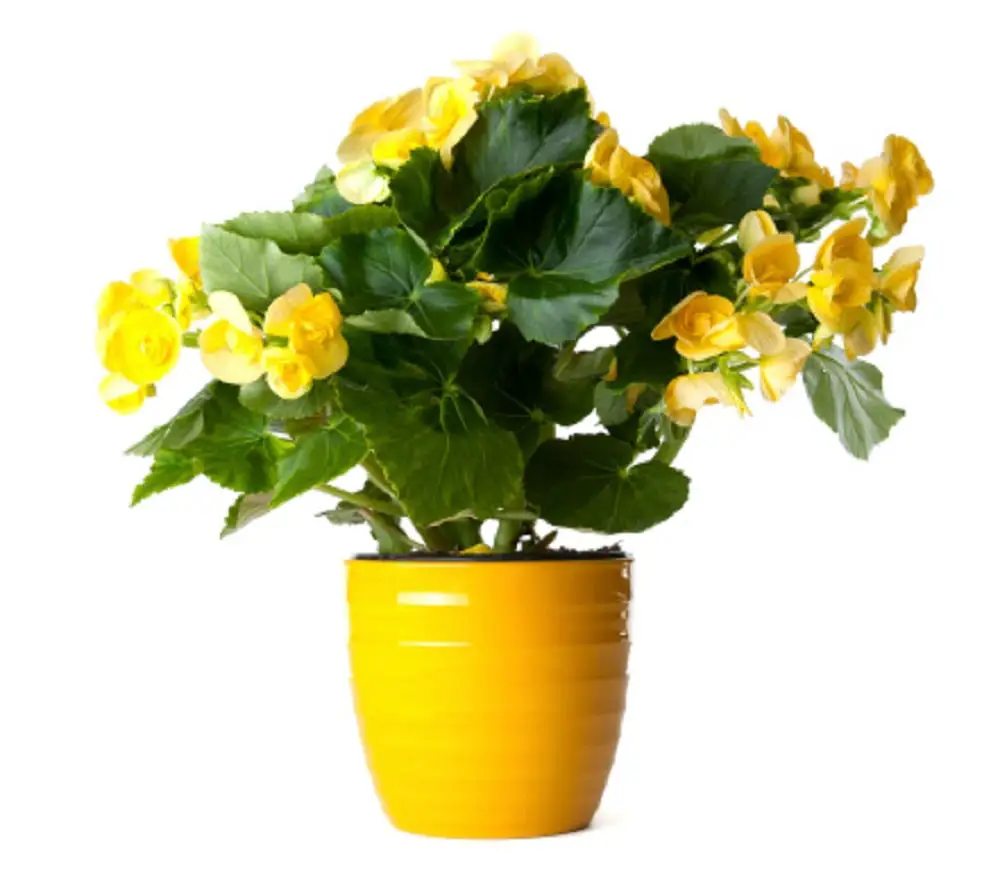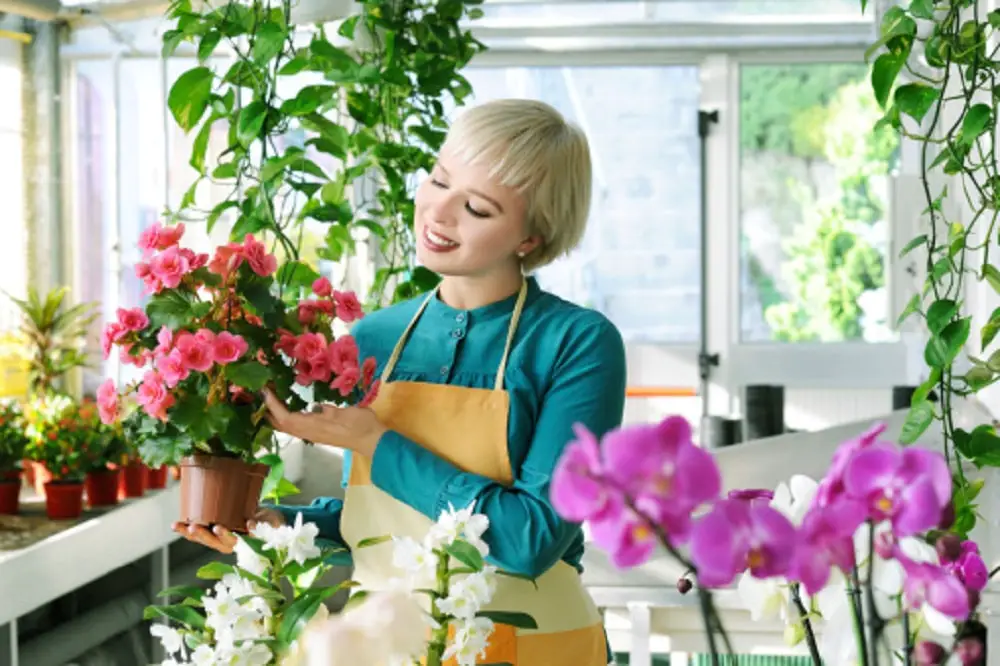Begonia is among the most popular houseplants in the United States, Canada, and Europe. This ornament houseplant is hardy and easy to maintain.
But begonia leaf problems are inevitable. It can be worrying to see the leaves of your begonia plant turning brown or yellow.
There is no need to freak out as most of these issues can be resolved. The rule of thumb is to identify the cause of begonia leaves turning brown and fix it.
So, what are my begonia leaves turning brown? The main causes are underwatering and direct sunlight exposure stress. Overwatering and low humidity cause brown leaf tips and edges.
This article provides more insight into the causes of begonia leaf problems and ideas on how you can reserve brown leaves. The leaf problem is quite common on rex begonia and cane begonia. Let’s find that out together now.
You May Enjoy: How to Care for Begonia Maculata

Causes of Begonia Leaves Turning Brown and Crispy
Below are the possible causes of begonia leaves turning brown:
Underwatering
Begonia plants are tropical plants. These plants prefer an environment rich in moisture to develop stunning leaves and flowers.
Dry soil makes begonia plants experience brown leaf tips and edges. You will also notice the lower parts of the leaf becoming crispy and brown.
Keep in mind that insufficient water supply stress will affect both new and old foliage on this ornament plant. Sometimes this houseplant will begin to wilt.
The best option is to investigate the potting soil before watering the plant. If you notice about two inches of the potting mix is dry, consider watering the houseplant.
The measure will help to revive the dying begonias. The common symptoms of dying begonias due to underwatering are stunted growth, small leaves, and brown crispy leaves.
Can you reverse brown leaves? Absolutely. But it would be best to identify the causes and implement the measures to fix them.
Below are steps on how to water begonias suffering from underwatering stress:
- Place the houseplant in the sink without the saucer.
- Allow the plant to soak up via the drainage holes from the bottom.
- Feel the top of the soil to check if the water has attained about 2-3 inches.
- Drain the sink and allow the potting mix to drain thoroughly. Place the plant into the saucer and at the right place.
Overwatering
Begonias have succulent stems and leaves. These structural adaptations enable the plant to survive for long without water.
Besides that, the houseplant becomes more sensitive to fungus and moisture. Overwatering stress makes the plant leaves start turning yellow due to chlorosis.
Too much moisture in the soil inhibits aeration and this limits roots access to sufficient oxygen supply. The condition reduces the root functions and can cause root rot.
The root rot makes the plant unable to get sufficient water. You will notice brown leaf tips and edges on young foliage. The old leaves will become brown and crispy.
Sometimes the issue makes begonias wilt and eventually dies. Always check on your plant daily before leaving the house for work.
Providing the right amount of water to your begonias is the best routine. Remember to inspect the soil before watering the plant.
You can press your index finger in the soil to check the moisture level. Some people opt to lift the plant to determine the weight. A lightweight plant pot is an indicator of the need for watering.
Repot the begonias experiencing root rot. Use a pair of sterilized scissors to cut off the affected root parts before repotting to a new and sterilized pot.
Low Humidity
Begonias prefer moderate humidity levels. Providing a similar natural habitat to your houseplant will foster stunning leaves and flowers.
But maintaining a high humidity level in the house can be tricky. Try to ensure the growing condition of begonias has a humidity level above 40%.
Low humidity makes begonias develop brown leaf tips and edges. The issues ruin the health and well-being of this indoor plant.
I recommend using a digital hygrometer to measure the humidity level in the house. It will help you verify if the humidity level is the reason behind begonia leaves turning brown.
Use a humidifier to boost the humidity level in the house. The condition will make your plant develop beautiful leaves and flowers.
Keep in mind that extremely high humidity can also cause begonia leaf problems. These issues are common in situations where ventilation is poor.
High humidity encourages the growth of fungal and bacterial diseases that cause begonia leaves to turn brown.
I suggest you try to maintain a humidity level between 40% and 60%. It is the best growing condition that helps to avoid begonia leaf problems.
Direct Sunlight Exposure
Begonia plants come in different varieties. Some begonia varieties can tolerate direct sunlight exposure and others may not. Begonia maculata is a variety that cannot withstand direct sunlight exposure.
Direct sunlight exposure will make your begonia maculata develop large brown patches on the leaves. The sun scorch can also cause a begonia leaf burn problem.
If you are wondering why your outdoor begonia leaves are turning brown, it could be due to direct sunlight exposure.
Begonia semperflorens have more waxy leaves making them hardy and able to tolerate direct sunlight exposure. It is the best begonia variety for outdoor gardening.
Begonia rex cultivars can tolerate moderate amounts of sunlight exposure. The variety is ideal for hanging baskets on the balcony.
If direct sunlight exposure is the cause of begonia leaves curling and turning brown, consider changing the location of the houseplant.
Place this houseplant in the area where it can receive bright indirect sunlight. Keep the indoor plant a few meters away from the window to prevent begonia leaf burn.
Acclimation Stress
The first time I brought my begonia plant home, I found the plant fussy. But it becomes weird for begonia plants to develop brown, yellow, and crispy leaves when brought home.
The acclimation period usually causes most houseplants to struggle with the prevailing conditions. It is pretty normal since the plant will later overcome the issues.
Remember to provide ideal growing conditions to avoid begonia leaf problems. The brown leaves on begonias during acclimation are super normal.
The issue happens since the root system of the houseplant usually experiences a little shock during transportation. The brown leaves will recover after a few weeks.
Some begonia varieties will even lose leaves and stay for a few weeks before new ones begin to sprout. Offer an ideal environment and your begonia will recover.

Temperature Stress
Begonia plants thrive in an environment with a temperature range of 50-55oF (10-13oC). Any temperature above or below will cause begonia leaves to curl and turning brown.
Begonia houseplants are quite sensitive to high and low-temperature changes. Both conditions can cause brown leaves and wilt of the plant.
Low and moderate temperatures increase the risk of overwatering. The issue is the reason behind begonia leaves brown spots and patches.
High temperature increases the rate of transpiration via the foliage. Excess water loss makes begonia leaves droop and turn brown before falling off.
Ensure the begonia plant is not close to the heat sources such as a hot air vent and fire appliance. It is the best option to avoid heat stress and brown leaves.
Diseases
Begonia plants are highly susceptible to diseases. The disease usually makes the houseplant leaves turn brown or black.
Some of the main conditions that facilitate begonia diseases are high humidity, acclimation, overwatering, and temperature stress.
If you notice rapidly spreading begonia leaves brown spots or patches, it is a clear indication of disease invasion. Saving such plants can be challenging for beginners.
The best option is to identify the cause of the disease and implement the right measures to save your begonia plant. Otherwise, the chances of the plant dying are quite high.
Improper Fertilization
Most indoor plants consume fewer nutrients. Indoor begonia plants are not an exemption since they prefer moderate nutrients.
Too much fertilization results in the buildup of toxic substances around the root system. The salt accumulation inhibits the roots from absorbing sufficient water for the plant.
The houseplant leaves will begin to brown and later wilt. Besides that, insufficient nutrients make the begonia leaves turn yellow and later brown before falling off.
I recommend applying spray fertilizer to the plant once a month. It is the best strategy to avoid excessive salt accumulation around the root system.
You can flush the soil with plenty of distilled water to help eliminate the excess salt accumulation. The tactic is ideal for those gardeners who did it without knowing.
Frequently Asked Questions
Why Are My Begonia Leaves Turning Yellow?
The yellow leaves on begonia are due to overwatering, inadequate sunlight exposure, pests, diseases, and many other improper growing conditions.
Why Are My Begonia Leaves Curling and Turning Brown?
The main cause of begonia leaves curling and turning brown are direct sunlight and underwatering issues. Other causes are low humidity, overwatering, and diseases.
Why Are My Outdoor Begonia Leaves Turning Brown?
Outdoor begonia leaves turn brown due to high temperatures and direct sunlight. These two factors cause begonia leaf burn and also browning of leaves before falling off.
Why Are My Begonia Leaves Crispy?
It could be due to lack of water, low humidity, and direct sunlight exposure. Fixing these growing conditions will help save the houseplant from crispy and brown leaves.
Why Are My Begonia Leaves Turning Red?
The red pigment on begonia leaves is due to anthocyanins. The condition usually occurs underneath the begonia leaves. The abundance of red pigment is due to the genetic make-up of the begonia variety.
What Do Overwatered Begonias Look Like?
Overwatered begonia usually has soft and soggy leaves. The wet muddy soil reduces aeration and this fosters the development of root rot. The disease makes the plant develop yellow leaves that turn brown and fall off later.
Why Is My Begonia Drooping Its Leaves?
The most common cause of begonia leaves drooping are overwatering and underwatering. Excessive wet soil results in root rot and this enhances begonia drooping.
Do Begonia Like Full Sun?
Begonia plants prefer bright indirect sunlight to produce stunning leaves and flowers. Full direct sunlight exposure causes brown leaf tips and edges or patches on the upper side.
In Conclusion
Begonia plants are hardy and easy to maintain. It is quite uncommon to see this houseplant with brown leaves. But the begonia leaf problems can happen when providing improper growing conditions.
Detecting the begonia brown leaves early will help save the plant. The most begonia leaf problems can be resolved by readjusting the current growing conditions. Otherwise, the plant might wilt and die.
The good news is that begonia plants require fairly low maintenance needs. Always inspect the cause of begonia leaves turning brown before finding ways on how to fix the problem.
More Sources and References
- Gary.W. Moorman. Begonia Diseases. Penn State Extension.
- Editor. Bacterial Leaf Spot of Begonia. The University of ILLINOIS.
- Editor. Pests and Diseases of Begonia Plant. National Begonia Society.
